#light novel style illustrations
Explore tagged Tumblr posts
Text

Prompt 32 : [Katherine/Nightlight] Katherine and Nightlight (either as cutesy teenagers in love or as friends).
They came straight to the cinema after school, and had an after-movie chat!
@rotgsecretsanta
#rotg#rise of the guardians#guardians of childhood#katherine shalazar#nightlight#rotgsecretsanta2024#rotgsecretsanta#light novel style illustrations#ikathz artwork#fanart
16 notes
·
View notes
Text






Warrior cats posting on main again, follow if you wanna see this turn into a comic abt a clan experiencing a rabies outbreak :)
#light gore#digital art#artwork#procreate#art style#digital illustration#queer artist#fanart#my art#graphic novel#art style challenge#warrior clan#erin hunter warriors#warriors fanart#warriors designs#warriors oc#warrior cats#warrior cat au#warrior cat art#warrior cat fanart#clangen#clangen art#clangen fanart#flame point siamese#we were girls together
72 notes
·
View notes
Text
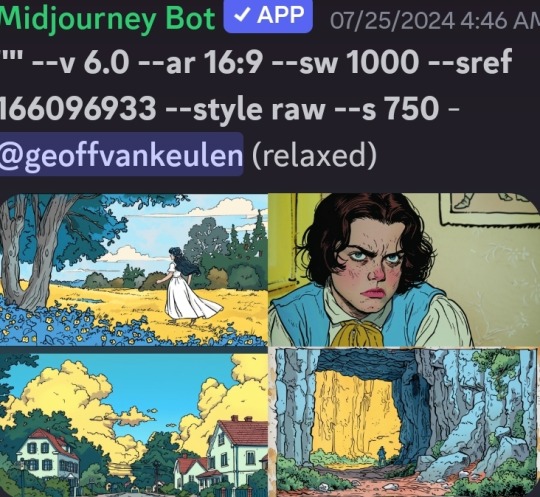
#--sref 166096933#yellow#blue#comic#landscape#bold lineart#vintage comic style#graphic novel#narrative illustration#exaggerated expression#dramatic#expressive face#character design#storybook#illustrated panel#scenery#forest path#cave#farmhouse#countryside#floral field#pop of color#green#pink#color block#contrast lighting#perspective
2 notes
·
View notes
Text

Poisoner's City, Chapter 5 - After what Kori only recalls as a vehicular-related accident, the person who saved her brings her fresh pastries. But is he only taking care of her hunger and medical needs because she reminds him of his long lost sister?
[Part of an ongoing project to illustrate each of the main scenes in the Myrios Series!]
#myrios series#kori omoide#poisoners city#light novel#drawing#artists on tumblr#drawings#manga#anime#artist#mangaka#original character#rkgk#original character art#original characters#original art#oc art#oc artist#manga style#illustrations#character art#oc#ocs
11 notes
·
View notes
Text


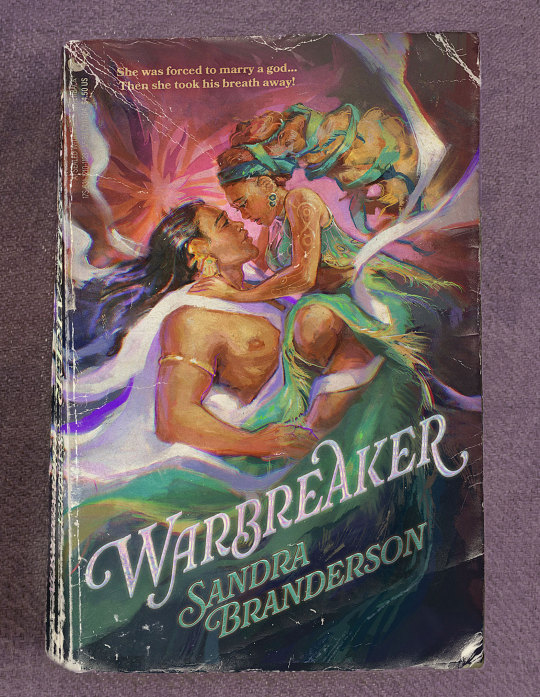
Looking for a stormy or colorful summer beach read? @priscellie and Ihad way too much fun creating some romance novel versions of Rhythm of War and Warbreaker. I made the illustrations and Priscillie made them look like actual books – beautifully ridiculous, curly typography, mock-up and all. I hope that there will be more :D
-------------------------------------------------------
Image description: (by Priscillie) Photomanipulation of two battered paperback pulp romance novels that look straight out of a thrift store bargain bin in the 1980s. The books are RHYTHM OF WAR and WARBREAKER by Sandra Branderson. RHYTHM OF WAR features an illustration of Navani and Raboniel experimenting with light, Raboniel looming behind Navani and leaning in, their faces almost touching. Raboniel streams voidlight from her image-left hand, which travels like lightning through Navani's tuning fork and into the sphere in Navani's gloved safehand. It's the primary source of light in the scene, and the background is nothing but murky darkness. Raboniel focuses intently, her red eyes alien and unknowable, as she focuses on her work. One of Navani's unkempt locks of hair just brushes the corner of Raboniel's mouth, and I'm not normal about it. Navani looks like she's gone three days without changing clothes and that she's slept in her hairstyle a similar number of nights. The collar of her havah is open, revealing her collarbones. Her expression is a mix of amazement, fear, and exhaustion, her mouth slightly open and her head tilted back slightly. Her face is lit from below by their experiment. The title and author's name are angled at a sharp diagonal, with strong capital letters and the occasional flourish. At the top is the tagline "In the Heart of War... Passion and Honor are Fused!" In one corner is some publication information, with a little logo of a seal and the words "A 'Sealed With a Kiss' Paperback," the fake ISBN 17S-631-1123-1210 (the last two sets of numbers being our birthdays), and prices in America and Canada. The other book is Warbreaker, also by Sandra Branderson. The illustration depicts Susebron and Siri in a ridiculously overblown, windswept Fabio-style cover, with a shirtless Susebron holding Siri so she's half sitting on his chest, one knee up with her thigh along his chest, her legs off to one side, and with her body twisted so she's facing him with her upper body, leaning down to him, a breath away from kissing him. She's wearing a teal dress with a Mesoamerican vibe that reveals her midriff and leaves her shoulders bare, but with a long train that blows off to the side. Her arms are painted in looping gold shapes. Her hair is blonde for most of its length, but it's beginning to change to a vivid red at the scalp. It's wrapped in teal ribbon to match her dress. Susebron has long, sleek black hair caught by the wind, chunky gold earrings and a slim gold cuff at his upper arm, and is wrapped in long white strips of awakened cloth that snake through the image in an energetic explosion of fabric. He gazes at her in handsome adoration and abandon, and she gazes back in love tempered by concern. The title has the same diagonal and italicized design with the same typeface and flourishes, but the title is jazzed up with shimmery, iridescent type. At the top is the tagling "She was forced to marry a god... Then she took his breath away!"
#cosmere#brandon sanderson#stormlight archive#procreate#cfsbf#roshar#described#cremposting#warbreaker#rhythm of war#row spoilers#rhythm of war spoilers#the stormlight archive#stormlight fanart#susebron#siri#navani kholin#navaniel#raboniel#romance#image id#image id in post#art collab
2K notes
·
View notes
Text
How to Consume The Apothecary Diaries
TLDR
Web Novel: A Pharmacist's Monologue, 387 chapters. Free in Japanese; English Translate MTL is very easy on-site. HERE.
Light Novel: The Apothecary Diaries. Partially free with an account HERE. Also Google exists. Purchaseable in Kindle/Print. 15 Japanese volumes (approx. 363 WN chapters) and 13/14 English volumes on Kindle (approx. 323/347 WN chapters) or 4/5 English volumes in print (approx. 101/128 WN chapters). Available on Amazon, Ebay, Abebooks, Facebook Marketplace. Use Bookfinder to compare prices.
Manga: x The Apothecary Diaries, ill. by Nekokurage. This illustration style is very similar to the anime. 80 manga chapters have been released. 14 Japanese volumes (74 M1 chapters, approx. 89 WN chapters, approx. 3.75 LN volumes) and 13 English volumes (68 M1 chapters, approx. 83 WN chapters, approx. 3.5 LN volumes). Available on Amazon, Ebay, Abebooks, Facebook Marketplace. Use Bookfinder to compare prices. x Maomao's Notes from the Inner Palace, ill. by Minoji Kurata. This illustration style is similar to the light novel. 84 manga chapters have been released. 19 Japanese volumes (82 M2 chapters, approx. 101 WN chapters, 4 LN volumes). There is no official English release.
Anime: The Apothecary Diaries, 29 episodes and currently airing weekly. 1 full season (42 M1 chapters or 8 volumes, approx. 31 M2 chapters or 7 volumes, approx. 56 WN chapters, 2 LN volumes). Season has 5 aired episodes as of last week (43-49 M1 chapters or volume 9, approx. 32-39 M2 chapters or half volume 8 with full volume 9, approx. 57-68 WN chapters, half LN volume 3). Season 2 will have 24 total episodes totalling to 48 episodes (possibly passing the manga release of 80 M1 chapters or 14 volumes, approx. 82 M2 chapters or 19 volumes, approx. 101 WN chapters, approx. 4 LN volumes). Free with ads on Crunchyroll. Conditionally free without ads with a Crunchyroll subscription or free trial. HERE.
Here's a spreadsheet:

Link
The Specifics
The Web Novel The Apothecary Diaries (or, A Pharmacist's Monologue) is published in Japanese for free as a web novel by Natsuo Hyuuga in 2011 on Shōsetsuka ni Narō [Let's Become a Novelist]. It is still ongoing, and the 387th chapter was published as recently as 5th February 2025. You can access it for free here. The webpages are easy to Google Translate, so if you don't mind MTL, the English translation also is free and easily accessible. To do this, right click anywhere on the webpage and select 'Translate to English'. Additionally, the website has an option to download a PDF of the entire novel. However, this is only in Japanese vertical script, and it is less easy to Google Translate.
The Novel There was a print novel of The Apothecary Diaries illustrated by Megumi Matsuda published in Japanese in 2012. It comprises a single volume, which covers 66 chapters of the web novel (the only chapters that had been released at the time). I am not aware of the availability of any English translation of this novel.
The Light Novel The Apothecary Diaries is being adapted into a light novel written by the same Natsuo Hyuuga and illustrated by Touka Shino. Some chapters are available for free on J-Novel here, but the rest require purchase. There is no legal way to access the full light novel for free. However, I have heard that Googling is easy and very profitable. The Japanese volumes began releasing in 2014. As of February 2025, there are 15 volumes in print, covering approximately 363 chapters of the web novel. The official English language release began in 2024. The English print release is around 3 years behind the Kindle release. As of February 2025, 13 volumes are available on Kindle, covering approximately 323 chapters of the web novel. The 14th volume will be released in May, covering approximately 347 chapters of the web novel. You can find these on Amazon for £6.39 each. As of February 2025, 4 volumes are available in print, covering approximately 101 chapters of the web novel. The 5th volume will be released in May, covering approximately 128 chapters of the web novel. You can find these new on Amazon or Ebay for around £13-17. You can find them secondhand for as low as £9 on Amazon or Abebooks. You can use Bookfinder to compare the prices between book vendors. Additionally, Facebook Marketplace is an underused resource.
The Manga The Apothecary Diaries is being adapted as 2 separate manga series by Itsuki Nanao. I don't know why. There are differences between the adaptations, and there are differing opinions on which one is better; I won't get into that here. I will refer to them separately as The Apothecary Diaries and Maomao's Notes from the Inner Palace. x The Apothecary Diaries is the manga adaptation illustrated by Nekokurage that began releasing in Japanese in 2017. 80 manga chapters have been released as a monthly serial. The illustration style is extremely similar to the anime. There are currently 14 volumes in print in Japanese (up to manga chapter 74), covering approximately 89 chapters of the web novel or 3.75 volumes of the light novel. The official English language release began in 2020. There are currently 13 volumes in print in English (up to manga chapter 68), covering approximately 83 chapters of the web novel or 3.5 volumes of the light novel. The 14th volume will release in October. There are Kindle versions; you can find these on Amazon for £5.65 each. You can find print versions new on Amazon or Ebay for around £10-13. You can find them secondhand for a similar price on Amazon, Ebay, or Abebooks. You can use Bookfinder to compare the prices between book vendors. Additionally, Facebook Marketplace is an underused resource. x Maomao's Notes from the Inner Palace is the manga adaptation illustrated by Minoji Kurata that began releasing in Japanese in 2017. 84 manga chapters have been released as a monthly serial. The illustration style is more similar to the light novel than to the anime. There are currently 19 volumes in print in Japanese (up to manga chapter 82), covering approximately 101 chapters of the web novel or 4 volumes of the light novel. The 20th volume will release in September. There is no official English language release.
The Anime The Apothecary Diaries is being adapted as anime. It has one complete season of 24 episodes, and season 2 is currently airing weekly. Episode 5 was released last week. Season 1 covers approximately 56 chapters of the web novel or 2 volumes of the light novel or 8 volumes of The Apothecary Diaries manga or just over 7 volumes of Maomao's Notes from the Inner Palace. I expect season 2 wholly to cover approximately chapters 57-101 of the web novel or the 3rd and 4th volumes of the light novel, possibly exceeding the currently manga release with the 9th-14th volumes of The Apothecary Diaries manga or the latter half of the 8th volume through the 19th volumes of Maomao's Notes from the Inner Palace. You can access it in dub and sub on Crunchyroll here. It is free with ads. You can watch it without ads by subscribing to Crunchyroll for £4.99/mo. The first subscription on a Crunchyroll account includes a 7 day free trial. This requires you to enter your payment information before granting access. However, if you cancel the trial immediately after subscribing, you will retain access to the subscription services for the remainder of the trial period without worrying about the subscription charging your card at the end.
Edit 250215S: some corrections regarding the length of season 2 of the anime. Thanks to @blur0se for bringing that to my attention.
#i wrote this twice#i accidentally deleted it whilst halfway through#i am so behind on my master's assignments#kusuriya no hitorigoto#apothecary diaries#the apothecary diaries#maomao's notes from the inner palace#the apothecary diaries season 2
870 notes
·
View notes
Text


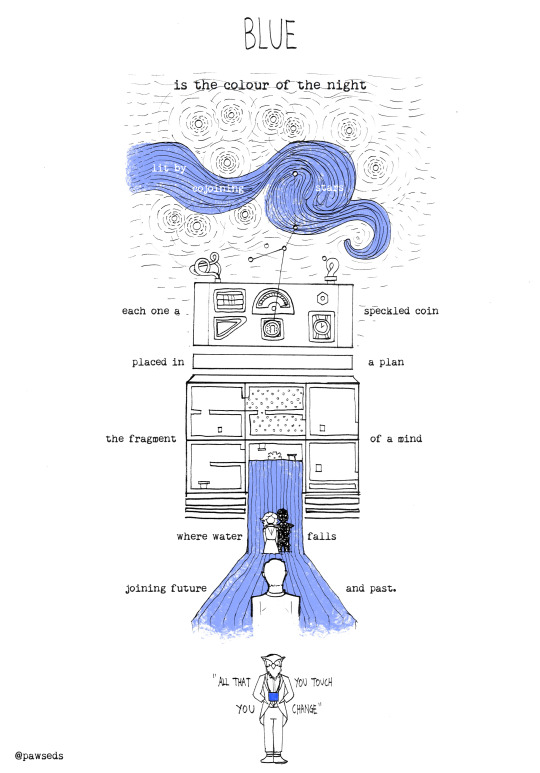
In 2019, Rusty Lake had an art and poetry contest to win the graphic novel they recently released then. I submitted this and was one of the three winners! It still holds well and I'm still a fan of it, so to this blog it goes.
This was heavily inspired by cowcowtony's art, the one who illustrated the graphic novel. His art style's infleunce is now embedded into my art style forever lol. Also, in my usual dumb of assery nature, I drew this either during finals or when finals was coming up. But I really wanted the graphic novel and I knew I was never going to get it in any other way since it was expensive and shipping was even more expensive, so I dropped everything to work on this LMFAO
I remember posting IG stories while I was making this, so here they are in their wonderful graininess, with my drawing pens and light table.


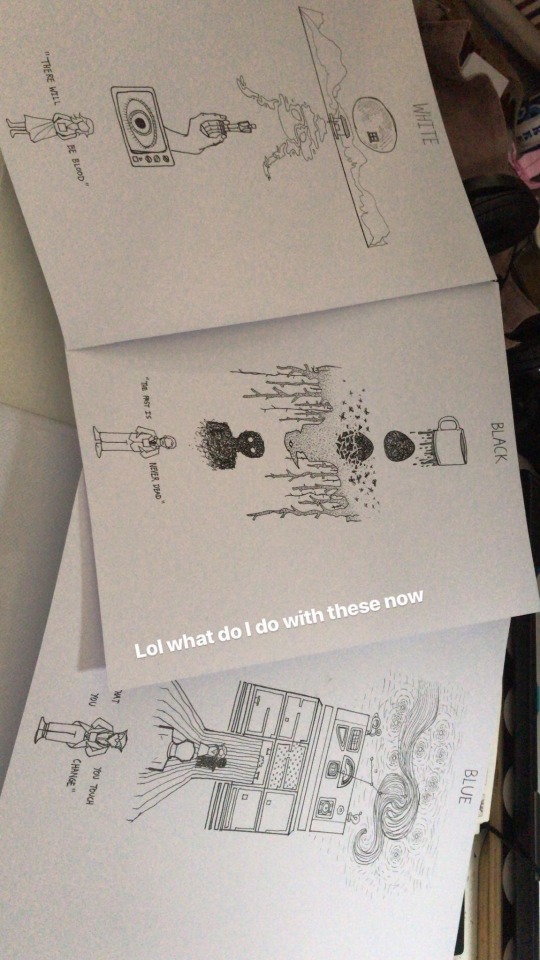
#my rusty lake art walked so my cosmic horror delta green art could run#rusty lake#rusty lake fanart#cube escape#dale vandermeer#laura vanderboom#pawsedscomic#pawsedsart#artwork#artists on tumblr#sketch#comic strip#original comic#my art#illustration#comic#web comic#comic art#comics#poetry#poem#visual poetry#visual poem
435 notes
·
View notes
Text
“Humans in the loop” must detect the hardest-to-spot errors, at superhuman speed
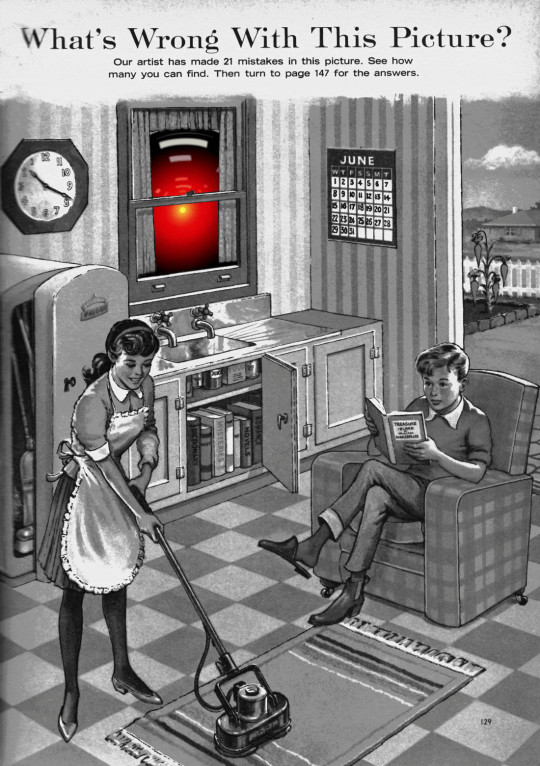
I'm touring my new, nationally bestselling novel The Bezzle! Catch me SATURDAY (Apr 27) in MARIN COUNTY, then Winnipeg (May 2), Calgary (May 3), Vancouver (May 4), and beyond!

If AI has a future (a big if), it will have to be economically viable. An industry can't spend 1,700% more on Nvidia chips than it earns indefinitely – not even with Nvidia being a principle investor in its largest customers:
https://news.ycombinator.com/item?id=39883571
A company that pays 0.36-1 cents/query for electricity and (scarce, fresh) water can't indefinitely give those queries away by the millions to people who are expected to revise those queries dozens of times before eliciting the perfect botshit rendition of "instructions for removing a grilled cheese sandwich from a VCR in the style of the King James Bible":
https://www.semianalysis.com/p/the-inference-cost-of-search-disruption
Eventually, the industry will have to uncover some mix of applications that will cover its operating costs, if only to keep the lights on in the face of investor disillusionment (this isn't optional – investor disillusionment is an inevitable part of every bubble).
Now, there are lots of low-stakes applications for AI that can run just fine on the current AI technology, despite its many – and seemingly inescapable - errors ("hallucinations"). People who use AI to generate illustrations of their D&D characters engaged in epic adventures from their previous gaming session don't care about the odd extra finger. If the chatbot powering a tourist's automatic text-to-translation-to-speech phone tool gets a few words wrong, it's still much better than the alternative of speaking slowly and loudly in your own language while making emphatic hand-gestures.
There are lots of these applications, and many of the people who benefit from them would doubtless pay something for them. The problem – from an AI company's perspective – is that these aren't just low-stakes, they're also low-value. Their users would pay something for them, but not very much.
For AI to keep its servers on through the coming trough of disillusionment, it will have to locate high-value applications, too. Economically speaking, the function of low-value applications is to soak up excess capacity and produce value at the margins after the high-value applications pay the bills. Low-value applications are a side-dish, like the coach seats on an airplane whose total operating expenses are paid by the business class passengers up front. Without the principle income from high-value applications, the servers shut down, and the low-value applications disappear:
https://locusmag.com/2023/12/commentary-cory-doctorow-what-kind-of-bubble-is-ai/
Now, there are lots of high-value applications the AI industry has identified for its products. Broadly speaking, these high-value applications share the same problem: they are all high-stakes, which means they are very sensitive to errors. Mistakes made by apps that produce code, drive cars, or identify cancerous masses on chest X-rays are extremely consequential.
Some businesses may be insensitive to those consequences. Air Canada replaced its human customer service staff with chatbots that just lied to passengers, stealing hundreds of dollars from them in the process. But the process for getting your money back after you are defrauded by Air Canada's chatbot is so onerous that only one passenger has bothered to go through it, spending ten weeks exhausting all of Air Canada's internal review mechanisms before fighting his case for weeks more at the regulator:
https://bc.ctvnews.ca/air-canada-s-chatbot-gave-a-b-c-man-the-wrong-information-now-the-airline-has-to-pay-for-the-mistake-1.6769454
There's never just one ant. If this guy was defrauded by an AC chatbot, so were hundreds or thousands of other fliers. Air Canada doesn't have to pay them back. Air Canada is tacitly asserting that, as the country's flagship carrier and near-monopolist, it is too big to fail and too big to jail, which means it's too big to care.
Air Canada shows that for some business customers, AI doesn't need to be able to do a worker's job in order to be a smart purchase: a chatbot can replace a worker, fail to their worker's job, and still save the company money on balance.
I can't predict whether the world's sociopathic monopolists are numerous and powerful enough to keep the lights on for AI companies through leases for automation systems that let them commit consequence-free free fraud by replacing workers with chatbots that serve as moral crumple-zones for furious customers:
https://www.sciencedirect.com/science/article/abs/pii/S0747563219304029
But even stipulating that this is sufficient, it's intrinsically unstable. Anything that can't go on forever eventually stops, and the mass replacement of humans with high-speed fraud software seems likely to stoke the already blazing furnace of modern antitrust:
https://www.eff.org/de/deeplinks/2021/08/party-its-1979-og-antitrust-back-baby
Of course, the AI companies have their own answer to this conundrum. A high-stakes/high-value customer can still fire workers and replace them with AI – they just need to hire fewer, cheaper workers to supervise the AI and monitor it for "hallucinations." This is called the "human in the loop" solution.
The human in the loop story has some glaring holes. From a worker's perspective, serving as the human in the loop in a scheme that cuts wage bills through AI is a nightmare – the worst possible kind of automation.
Let's pause for a little detour through automation theory here. Automation can augment a worker. We can call this a "centaur" – the worker offloads a repetitive task, or one that requires a high degree of vigilance, or (worst of all) both. They're a human head on a robot body (hence "centaur"). Think of the sensor/vision system in your car that beeps if you activate your turn-signal while a car is in your blind spot. You're in charge, but you're getting a second opinion from the robot.
Likewise, consider an AI tool that double-checks a radiologist's diagnosis of your chest X-ray and suggests a second look when its assessment doesn't match the radiologist's. Again, the human is in charge, but the robot is serving as a backstop and helpmeet, using its inexhaustible robotic vigilance to augment human skill.
That's centaurs. They're the good automation. Then there's the bad automation: the reverse-centaur, when the human is used to augment the robot.
Amazon warehouse pickers stand in one place while robotic shelving units trundle up to them at speed; then, the haptic bracelets shackled around their wrists buzz at them, directing them pick up specific items and move them to a basket, while a third automation system penalizes them for taking toilet breaks or even just walking around and shaking out their limbs to avoid a repetitive strain injury. This is a robotic head using a human body – and destroying it in the process.
An AI-assisted radiologist processes fewer chest X-rays every day, costing their employer more, on top of the cost of the AI. That's not what AI companies are selling. They're offering hospitals the power to create reverse centaurs: radiologist-assisted AIs. That's what "human in the loop" means.
This is a problem for workers, but it's also a problem for their bosses (assuming those bosses actually care about correcting AI hallucinations, rather than providing a figleaf that lets them commit fraud or kill people and shift the blame to an unpunishable AI).
Humans are good at a lot of things, but they're not good at eternal, perfect vigilance. Writing code is hard, but performing code-review (where you check someone else's code for errors) is much harder – and it gets even harder if the code you're reviewing is usually fine, because this requires that you maintain your vigilance for something that only occurs at rare and unpredictable intervals:
https://twitter.com/qntm/status/1773779967521780169
But for a coding shop to make the cost of an AI pencil out, the human in the loop needs to be able to process a lot of AI-generated code. Replacing a human with an AI doesn't produce any savings if you need to hire two more humans to take turns doing close reads of the AI's code.
This is the fatal flaw in robo-taxi schemes. The "human in the loop" who is supposed to keep the murderbot from smashing into other cars, steering into oncoming traffic, or running down pedestrians isn't a driver, they're a driving instructor. This is a much harder job than being a driver, even when the student driver you're monitoring is a human, making human mistakes at human speed. It's even harder when the student driver is a robot, making errors at computer speed:
https://pluralistic.net/2024/04/01/human-in-the-loop/#monkey-in-the-middle
This is why the doomed robo-taxi company Cruise had to deploy 1.5 skilled, high-paid human monitors to oversee each of its murderbots, while traditional taxis operate at a fraction of the cost with a single, precaratized, low-paid human driver:
https://pluralistic.net/2024/01/11/robots-stole-my-jerb/#computer-says-no
The vigilance problem is pretty fatal for the human-in-the-loop gambit, but there's another problem that is, if anything, even more fatal: the kinds of errors that AIs make.
Foundationally, AI is applied statistics. An AI company trains its AI by feeding it a lot of data about the real world. The program processes this data, looking for statistical correlations in that data, and makes a model of the world based on those correlations. A chatbot is a next-word-guessing program, and an AI "art" generator is a next-pixel-guessing program. They're drawing on billions of documents to find the most statistically likely way of finishing a sentence or a line of pixels in a bitmap:
https://dl.acm.org/doi/10.1145/3442188.3445922
This means that AI doesn't just make errors – it makes subtle errors, the kinds of errors that are the hardest for a human in the loop to spot, because they are the most statistically probable ways of being wrong. Sure, we notice the gross errors in AI output, like confidently claiming that a living human is dead:
https://www.tomsguide.com/opinion/according-to-chatgpt-im-dead
But the most common errors that AIs make are the ones we don't notice, because they're perfectly camouflaged as the truth. Think of the recurring AI programming error that inserts a call to a nonexistent library called "huggingface-cli," which is what the library would be called if developers reliably followed naming conventions. But due to a human inconsistency, the real library has a slightly different name. The fact that AIs repeatedly inserted references to the nonexistent library opened up a vulnerability – a security researcher created a (inert) malicious library with that name and tricked numerous companies into compiling it into their code because their human reviewers missed the chatbot's (statistically indistinguishable from the the truth) lie:
https://www.theregister.com/2024/03/28/ai_bots_hallucinate_software_packages/
For a driving instructor or a code reviewer overseeing a human subject, the majority of errors are comparatively easy to spot, because they're the kinds of errors that lead to inconsistent library naming – places where a human behaved erratically or irregularly. But when reality is irregular or erratic, the AI will make errors by presuming that things are statistically normal.
These are the hardest kinds of errors to spot. They couldn't be harder for a human to detect if they were specifically designed to go undetected. The human in the loop isn't just being asked to spot mistakes – they're being actively deceived. The AI isn't merely wrong, it's constructing a subtle "what's wrong with this picture"-style puzzle. Not just one such puzzle, either: millions of them, at speed, which must be solved by the human in the loop, who must remain perfectly vigilant for things that are, by definition, almost totally unnoticeable.
This is a special new torment for reverse centaurs – and a significant problem for AI companies hoping to accumulate and keep enough high-value, high-stakes customers on their books to weather the coming trough of disillusionment.
This is pretty grim, but it gets grimmer. AI companies have argued that they have a third line of business, a way to make money for their customers beyond automation's gifts to their payrolls: they claim that they can perform difficult scientific tasks at superhuman speed, producing billion-dollar insights (new materials, new drugs, new proteins) at unimaginable speed.
However, these claims – credulously amplified by the non-technical press – keep on shattering when they are tested by experts who understand the esoteric domains in which AI is said to have an unbeatable advantage. For example, Google claimed that its Deepmind AI had discovered "millions of new materials," "equivalent to nearly 800 years’ worth of knowledge," constituting "an order-of-magnitude expansion in stable materials known to humanity":
https://deepmind.google/discover/blog/millions-of-new-materials-discovered-with-deep-learning/
It was a hoax. When independent material scientists reviewed representative samples of these "new materials," they concluded that "no new materials have been discovered" and that not one of these materials was "credible, useful and novel":
https://www.404media.co/google-says-it-discovered-millions-of-new-materials-with-ai-human-researchers/
As Brian Merchant writes, AI claims are eerily similar to "smoke and mirrors" – the dazzling reality-distortion field thrown up by 17th century magic lantern technology, which millions of people ascribed wild capabilities to, thanks to the outlandish claims of the technology's promoters:
https://www.bloodinthemachine.com/p/ai-really-is-smoke-and-mirrors
The fact that we have a four-hundred-year-old name for this phenomenon, and yet we're still falling prey to it is frankly a little depressing. And, unlucky for us, it turns out that AI therapybots can't help us with this – rather, they're apt to literally convince us to kill ourselves:
https://www.vice.com/en/article/pkadgm/man-dies-by-suicide-after-talking-with-ai-chatbot-widow-says

If you'd like an essay-formatted version of this post to read or share, here's a link to it on pluralistic.net, my surveillance-free, ad-free, tracker-free blog:
https://pluralistic.net/2024/04/23/maximal-plausibility/#reverse-centaurs

Image: Cryteria (modified) https://commons.wikimedia.org/wiki/File:HAL9000.svg
CC BY 3.0 https://creativecommons.org/licenses/by/3.0/deed.en
#pluralistic#ai#automation#humans in the loop#centaurs#reverse centaurs#labor#ai safety#sanity checks#spot the mistake#code review#driving instructor
857 notes
·
View notes
Text
Writing Notes: Story Plot
Plot - is what happens in a story.
Every story is made up of both events and characters.
A story happens because a pattern is interrupted.
If you are writing about a day that is like any other day, it is most likely a routine, not a story.
A Strong Plot
Centered on one moment—an interruption of a pattern, a turning point, or an action—that raises a dramatic question, which must be answered throughout the course of the story. This is also known as plot A.
Every element of the plot—each scene, each line—exists in service of answering that question. There are myriad plot devices that can bolster the main story; these are considered subplots.
7 Types of Plots
The nature of the dramatic question informs the plot and what kind of story it will be. Are the characters threatened by something external or internal? What genre will the story be?
Tragedy
Your main character should undergo a major change of fortune — almost always from good to bad, happy to sad.
Tragic characters have to suffer.
Comedy
Even though your characters have defects, their defects should never wind up being painful or destructive.
Comic characters make it through unscathed.
Hero’s Journey
The hero of a story must undergo two things:
Recognition and reversal of a situation.
Something has to happen from the outside that inspires the hero in a way that he/she didn’t realize before.
Then he has to undertake a quest to solve the situation.
Rags to Riches
Remember Cinderella? The classic fairy tale follows a simple rags-to-riches plot:
the protagonist is downtrodden, impoverished, or otherwise struggling, and through a series of events—either magical, like in Cinderella, or more realistic, like in Great Expectations — achieves success.
This type of plot often features a happy ending.
Rebirth
The rebirth style of plot follows a character’s transformation from bad to good.
The character will frequently have a tragic past that informs their current negative view of life, however, a series of events (usually set in motion by the protagonist or a narrator) will help them see the light.
See: Scrooge in A Christmas Carol, or the Beast in Beauty and the Beast.
Overcoming the Monster
Otherwise known as the good versus evil plot, this type of story features a protagonist (good) fighting an antagonist (evil).
The protagonist can be a singular character or a group united in their mission.
The antagonist is generally a big, bad evil (like Darth Vader in Star Wars) who continuously throws obstacles in the protagonist’s way—until the final battle.
Voyage & Return
This plot is a simple point A to point B and back to point A plot.
The protagonist sets off on a journey, only to return to his or her starting point having gained wisdom and experience (and sometimes treasure too).
Paulo Coelho's The Alchemist is a beloved contemporary illustration of this plot.
How to Outline a Story Plot: Three-Act Structure
Beginning
The beginning of your novel has to accomplish a lot.
It must introduce the hero, the villain, and the world of the story, as well as the story’s dramatic question, and it must do this with enough energy to grab your reader’s interest right away.
A prologue can be useful for seizing the reader’s attention.
Middle
Your job during the middle of the story is to make the hero’s quest as difficult as possible so that at every moment it seems less likely that the hero will triumph.
You must raise the stakes along the way and create obstacles of ever-increasing intensity while keeping your eye firmly fixed on your conclusion.
The different plot points can include the basic plot, plus various subplots.
The main plot of a story always has to build up to the resolution.
End
The end of your story answers the dramatic question, which already has your ending hidden within it.
For example, if your question is:
Will Ahab catch the whale?
Then your story’s finale will be the moment when he does.
Often, tension evaporates in the middle of a novel, so it’s a good idea to write your ending first. It may not be perfect, and you can always change it later, but it’s useful to know the climax to which your characters are headed.
Having that destination will help you stay focused during the “middle muddle.”

Freytag’s Pyramid
German novelist Gustav Freytag expanded on Aristotle’s concept of plot by adding 2 additional components to the beginning, middle, and end:
Rising action and falling action.
Freytag’s dramatic arc, also known as Freytag’s Pyramid, includes the following:
Exposition. This is the beginning of the story.
Rising action. Once the story has begun, it is important to create tension by raising the stakes. You must raise the stakes along the way and create obstacles of ever-increasing intensity while keeping your eye firmly fixed on your conclusion.
Climax (middle). The pinnacle of your plot.
Falling action. The falling action occurs after the climax but before the end. Falling action frequently depicts the protagonist dealing with the consequences or fallout of the climax. The falling action is when the protagonist ties up loose ends and heads toward the conclusion. It is also referred to as the denouement.
Resolution. This is the end of the story.
Source ⚜ The 3-Act Structure: History & Elements ⚜ A Guide More References: Plot ⚜ Character ⚜ Worldbuilding ⚜ Writing Notes
#plot#on writing#writing tips#writing advice#writeblr#dark academia#spilled ink#writing reference#writing inspiration#creative writing#fiction#writing ideas#literature#writers on tumblr#poets on tumblr#writing prompt#poetry#light academia#writing resources
297 notes
·
View notes
Text

First commission ever from @/yasszh on Instagram! Thank you very much!
Link : VGen | Ko-Fi
3 notes
·
View notes
Text

Here comes a thought
Per request, here is an AI generated image description:
A stylized digital illustration features a light-blue anthropomorphic character, likely a gemstone or crystal.
The character is centrally positioned and has long, wavy, dark-blue hair that cascades around her. Her expression is serene, and her eyes are a darker shade of blue. Her attire appears to be a light, almost translucent, bluish-gray garment.
The background is a vast expanse of varying shades of blue, with many translucent, light-white, leaf-like or butterfly-like forms. These elements create a sense of ethereal movement and soft luminosity in the scene. The overall color palette is a cool, calming mixture of blues and whites. The style suggests a graphic novel or animated series
#art#digital art#fanart#artists on tumblr#procreate#steven universe#steven universe future#sapphire#Steven universe sapphire#blue#redraw#su artwork
64 notes
·
View notes
Text

So... I play MANY visual novels and I've loved TOUCHSTARVED for a long time now! Recently a new demo came out for it so I played. And of COURSE I went straight to tumblr after and looked up "TOUCHSTARVED"! While scrolling, I came across this BEAUTIFUL journal template by @todayis-snowy! Fun fact: One of the first things I figure out about a MC is their handwriting, so this is especially interesting to me! One more thing, I am aware there are typos in the actual image. Photopea unfortunately doesn't offer corrections when you type. I apologize. The text should all be right in the alt text, though! Alt text (description): The image depicts an illustration (in the art style of TOUCHSTARVED) of a journal inside a blue hard book cover with white pages. The journal is sitting on top of what appears to be a wooden desk, and lighting up the pages is dim blue moonlight. Alt text (left page of the journal): "My day has been extraordinarily peculiar... According to Leander, I met the most important people all in two days. The most important? Well, I have to admit, they are the most interesting. Amidst death and countless monstrosities, the expectations for Eridia are bleak. Yet I am glad to have been proven wrong by my new companions. Perhaps I should describe them? I still need to process my thoughts about them, anyway." Alt text (right page of the journal): "I'll start with who I dislike first; Vere. Goddamn, he gets on my nerves. I never knew a person so...crass. I digress. I owe Kuras, but I don't know how to pay him. I'll have to figure that out. Same with Leander. Ais seems nice. He was threatening at the start, but he didn't HAVE to offer an escort back (which he did). And Mhin is the most mysterious of them all (and also the most attractive in my opinion). Those would have to be my final thoughts. - Avalonia"
#touchstarved game#touchstarved oc#touchstarved mc#mhin#vere#kuras#ais touchstarved#handwriting reveal#journal
57 notes
·
View notes
Text
After my recent reread of Alice, I learned that a decade back there was a republication by seven seas, a company primarily known for translations of light novels and manga, illustrated in that style rather than using the classic pictures.

It kind of made me laugh a little at first, the way the vibe difference between the classic and the anime images created a pretty different emotional response. But thinking about it more, honestly this way might be more accurate to the original spirit than the actual original images at this point. The original Tenniel images have a style I don't see often today, so I associate it mainly with older classics and well known works - time has given it a sense of exclusivity or "dignity" that I'm not sure was originally intended. Carroll went out of his way to hire a well known satire cartoonist for the illustrations, after all, something associated with contemporary entertainment. It's possible that audiences in the 1860s felt a similar vibe from the original art as modern ones might for these.
94 notes
·
View notes
Text
ʜᴏᴡ ᴛᴏ ʀᴏᴍᴀɴᴛɪᴄɪᴢᴇ ꜱᴛᴜᴅʏ

1. Create a Beautiful Study Environment
Light a candle or use fairy lights for a cozy ambiance.
Keep your desk organized and decorate it with items you love (plants, photos, or quotes).
Use aesthetically pleasing stationery like colorful pens, highlighters, and notebooks.
2. Curate a Study Playlist
Find instrumental music, lo-fi beats, or classical tunes to set the mood.
Alternatively, choose ambient sounds like rain, coffee shop chatter, or nature.
3. Romanticize Your Materials
Write notes neatly and add doodles or illustrations.
Use highlighters to make your notes visually appealing.
Treat your textbooks as if they’re sacred knowledge.
4. Incorporate Rituals
Make a cup of tea or coffee before starting.
Set intentions for the session, like "Today, I’m learning to grow."
Take a moment to visualize yourself succeeding.
5. Dress the Part
Wear comfortable but stylish clothes that make you feel good.
Use accessories like a cozy blanket or reading glasses to feel scholarly.
6. Embrace the Aesthetic
Imagine you’re in a library or an old-world study room.
Use vintage-style journals or leather-bound notebooks.
7. Celebrate Small Wins
Reward yourself after completing a session (e.g., a treat or break in the sun).
Reflect on how far you've come and journal your achievements.
8. Use Meaningful Motivations
Remind yourself why you’re studying and visualize your goals.
Think of yourself as the main character in a story striving to succeed.
9. Add Nature
Study near a window with a view of trees or greenery.
Bring a small plant or flowers to your desk.
10. Make Breaks Magical
Read a poem or inspiring quote during breaks.
Do a quick yoga stretch or step outside to breathe fresh air.

Study sessions:
Atmosphere and Environment
Theme Your Space: Create a "study café" vibe or a "Victorian scholar" ambiance with décor and lighting.
Seasonal Touches: Incorporate seasonal elements (like autumn leaves, holiday lights, or fresh flowers) into your workspace.
Essential Oils: Diffuse calming scents like lavender or energizing ones like citrus to boost focus.
Natural Light: Position your desk near a window for natural light and fresh air.
Comfortable Seating: Use a cozy chair with a blanket or cushion for added comfort.
Aesthetic Tools and Accessories
Fountain Pen: Write with a fountain pen to add elegance to your notes.
Wax Seal Stamp: Use one to seal envelopes or even decorate your journal pages.
Custom Stationery: Invest in unique notebooks or personalized study planners.
Color-Coded Systems: Use washi tape or colored tabs for visual appeal and organization.
Glass Water Bottles or Mugs: Sip from aesthetic drinkware that fits your style.
Mindset and Imagination
Pretend You’re in a Movie: Act as if your study session is a montage scene in a film about your success story.
Be the Hero of Your Journey: Imagine your studies as the preparation for a grand quest or mission.
Romantic Narration: Mentally narrate your study day as though it were a novel (“She sipped her tea, deeply immersed in knowledge…”).
Creative Techniques
Illustrated Notes: Add doodles, diagrams, or charts to make concepts come alive.
Calligraphy Headers: Write chapter titles or key points in elegant lettering.
Mind Maps as Art: Turn mind maps into colorful and interconnected masterpieces.
Storytelling Learning: Create a story around the subject you’re studying to make it more engaging.
Incorporating Media
Study Vlogs: Record time-lapse videos of yourself studying to inspire future sessions.
Mood Boards: Create Pinterest boards or vision boards inspired by your study goals.
Inspiring Quotes: Print or write quotes from authors or thinkers related to your subject.
Embracing the Moment
Slow Morning Starts: Begin your day with a peaceful routine before diving into study.
Mindful Study: Pay attention to the sensations of writing, reading, or typing to stay present.
Gratitude Journaling: Start or end with a quick note of gratitude for the opportunity to learn.
Fun and Whimsy
Create Playlists for Each Subject: Match the vibe of your studies with specific music genres.
Snack Like a Scholar: Eat finger foods or pastries as if you’re in an old library café.
Dress Like a Character: Imagine you’re a professor, a scholar, or even a wizard studying spells.
Study out: Take your books or laptop to a park or garden.
End with a Ritual
Summarize Elegantly: End sessions with a recap written beautifully in a journal.
Close the Day with Tea: Treat yourself to a calming tea ceremony as you reflect.
Celebrate Your Effort: Create a simple reward system, like a treat, movie night, or self-care ritual.

Remember be gentle w yourself <3




pt.2?
Likes, comments, and reblogs are appreciated <3
#becoming that girl#clean girl#glow up#it girl#pink pilates princess#self development#self improvement#soft life#that girl#journaling#study#study motivation#studyblr#study blog#studyspo#student#student life#productivity#romantizing life
105 notes
·
View notes
Text
read a book for me. 📚
inspired by people who were curious about the books featured in xz’s video, let’s take a look at what they are. i’d like to think these were pre approved by XZ and are related to his interests. i’m not removing tge possibility that one of these were chosen by someone from xzs or the director himself. i’m tagging this as cpn because there will be some cpn. if you don’t wanna go that route and just enjoy learning about the titles featured, then go ahead. 😉


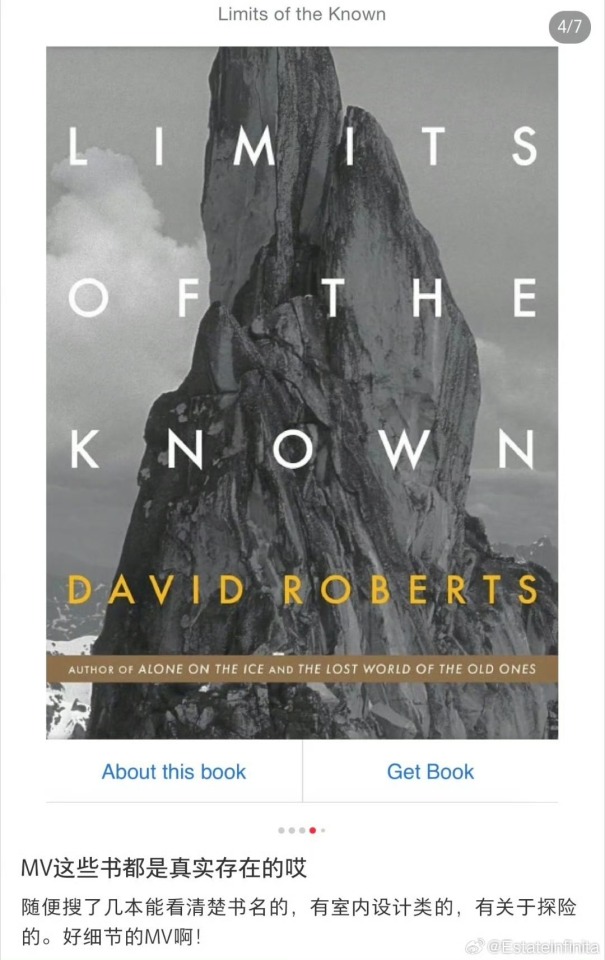
1. Restoration House by Kennesha Bucks
You don't have to live in your dream house to make your living spaces feel more like home. Home is meant to be a place to belong. A place to gather and connect. A place of beauty. A place to restore your soul. In Restoration House, author and designer Kennesha Buycks will encourage you to embrace your home and your story so you can create mindful spaces that give life to you, your loved ones, and all who enter.
2. LORI WILDE
that red book just says the author’s name and no actual title but if you look her up, she’s all about that romance novel. here is her website if you wanna know what i mean. if you move a bit, the spine of it says “boy” so i think it maybe one of those books that has the cowboys in it!
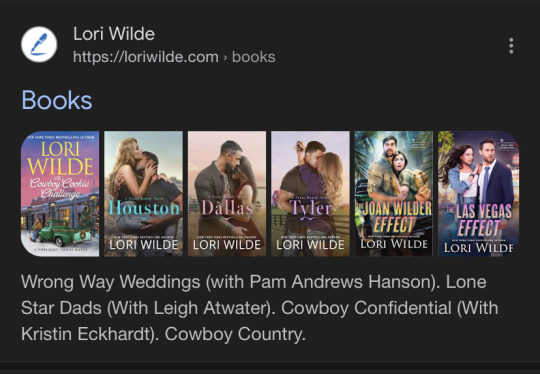
3. Next is LIT UP, which is a black book. I’m not so sure if it’s a real book and when you search it, there are a couple of contenders. Tho i personally gravitate towards p2 since it’s black and the plot of the story is something i think XZ will enjoy!
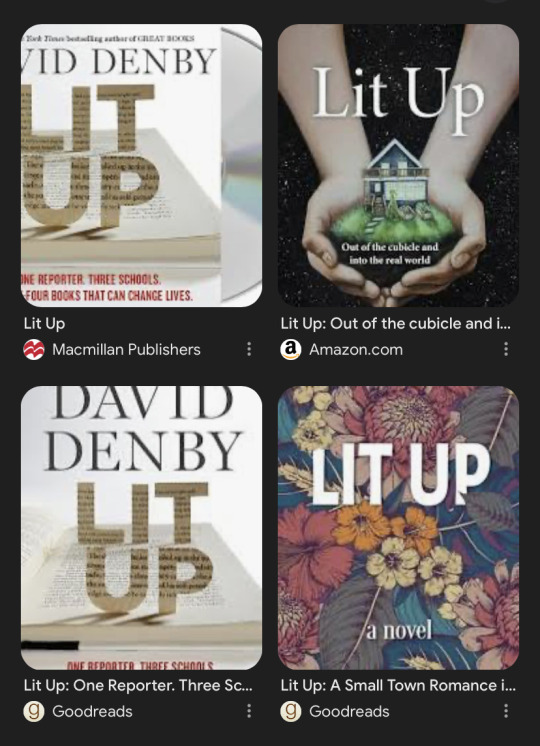
it says out of the cubicle and into the real world, it’s like him getting out of his work cubicle years ago and discovering the world.
book overview:
Eddy Gilmore found himself on society’s fringe after being exiled from Corporate America. Despite years of higher education and exemplary service inside a cubicle’s pixelated world, he had no tangible or transferable skills to offer his community. Amazingly, failure was the door into tapping dreams and gifts that had long been ignored as impractical.
This true to life adventure is a pilgrimage into the real world, a place where neighbors make and produce things that sustain life and bring joy. When their eyes were opened to the talents all around them, Eddy and his wife discovered how to produce value themselves, and sank roots into the community. By working together, they are building a life they might never need to retire from.
4. The Interior Design Handbook
Frida Ramstedt believes in thinking about how we decorate, rather than focusing on what we decorate with. We know more today than ever before about design trends, furniture, and knickknacks, and now Frida familiarizes readers with the basic principles behind interior and styling—what looks good and, most of all, why it looks good.
The Interior Design Handbook teaches you general rules of thumb—like what the golden ratio and the golden spiral are, the proper size for a coffee table in relation to your sofa, the optimal height to hang lighting fixtures, and the best ways to use a mood board—complete with helpful illustrations. Use The Interior Design Handbook to achieve a balanced, beautiful home no matter where you live or what your style is.
5. Limits of the Known
A celebrated mountaineer and author searches for meaning in great adventures and explorations, past and present.
David Roberts, "veteran mountain climber and chronicler of adventures" (Washington Post), has spent his career documenting voyages to the most extreme landscapes on earth. In Limits of the Known, he reflects on humanity’s—and his own—relationship to extreme risk. Part memoir and part history, this book tries to make sense of why so many have committed their lives to the desperate pursuit of adventure.
In the wake of his diagnosis with throat cancer, Roberts seeks answers with sharp new urgency. He explores his own lifelong commitment to adventuring, as well as the cultural contributions of explorers throughout history: What specific forms of courage and commitment did it take for Fridtjof Nansen to survive an eighteen-month journey from a record "farthest north" with no supplies and a single rifle during his polar expedition of 1893–96? What compelled Eric Shipton to return, five times, to the ridges of Mt. Everest, plotting the mountain’s most treacherous territory years before Hillary and Tenzing’s famous ascent? What drove Bill Stone to dive 3,000 feet underground into North America’s deepest cave?
What motivates the explorers we most admire, who are willing to embark on perilous journeys and push the limits of the human body? And what is the future of adventure in a world we have mapped and trodden from end to end?
6. Eat, Drink, Nap: Bringing the House Home
The quintessential style, cooking, and home interior book from Soho House, the world's leading members' club.
Since the first Soho House opened its doors over 25 years ago, we've learnt a bit about what works. Contemporary, global yet with something quintessentially English and homely at its heart, this is Soho House style explained by its experts:
- From planning a room to vintage finds: bringing the Soho House look home.
- Our House curator's advice on how to buy, collect and hang art.
- The art of a great night's sleep: how to design the perfect bedroom.
- No-fuss recipes and chef's tips: here's how to make your favourite House dishes.
- Inside Babington: our take on country-house living. Wellies optional.
- Flip-flop glamour and poolside style from Soho House Miami Beach.
- All the secrets of cocktail hour: House tonics and barman's tips.
- Spa treatment at home, DIY facials and chocolate brownies.
Eat Drink Nap, a 300-page highly illustrated book, with a foreword from founder Nick Jones, and photography from leading food and interiors photographers Mark Seelen and Jean Cazals, shares the Soho House blueprint for stylish, modern living, the Soho House way.
7. Styled
It’s easy to find your own style confidence once you know this secret: While decorating can take months and tons of money, styling often takes just minutes. Even a few little tweaks can transform the way your room feels.
At the heart of Styled are Emily Henderson’s ten easy steps to styling any space. From editing out what you don’t love to repurposing what you can’t live without to arranging the most eye-catching vignettes on any surface, you’ll learn how to make your own style magic.
With Emily’s style diagnostic, insider tips, and more than 1,000 unique ideas from 75 envy-inducing rooms, you’ll soon be styling like you were born to do it.
8. The other book i’m seeing is WINTER TID then it cuts off so again it’s tricky to confirm what it is! My best guess is WINTER TIDE but if you google that — i can’t connect how XZ will read that lol.
EDIT: adding this one seen from the alternate MV,
The Tale of the Body Thief by Anne Rice
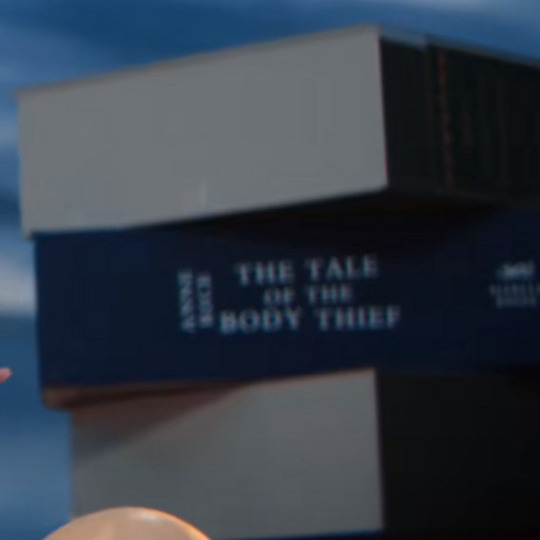
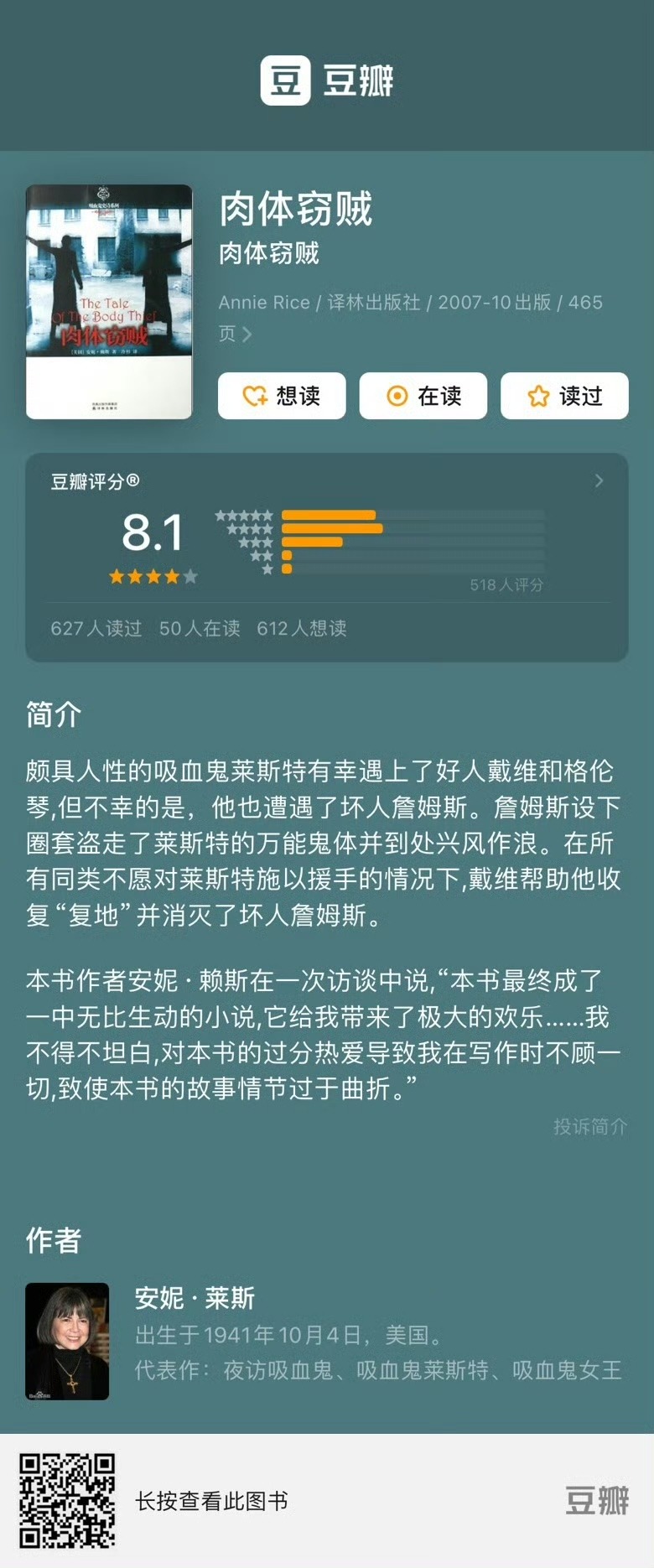
is a vampire novel by American writer Anne Rice, the fourth in her The Vampire Chronicles series, following The Queen of the Damned (1988). Published in 1992, it continues the adventures of Lestat, specifically his efforts to regain his lost humanity during the late 20th century.
=========
now let’s look at the CPN.
i see fans saying the style related books could be because of his work before. but he is more of a digital and design artist right? he does logos and stuff that can help their brand identity. i don’t remember him being an interior designer. there is also the eat, drink, nap which has topics on cooking and being a good host. these books are making me clown so hard! my head canon is xz is keeping himself busy ( as if he is not busy enough already ) with designing their home. his and wyb’s — if that wasn’t clear enough, that’s what i’m insinuating. if he isn’t traveling, i would imagine he is the type who just wants to spend time at home in between jobs. it is their home. their sanctuary. so xz would make sure that it is according to what they both want and that it’s stylish.
and when he is at home sipping wine, while waiting for Bobo, is he reading a LORI WILDE BOOK? lol. sexy millionaire cowboy you say? 👀👀👀👀

😂😂😂😂😂
or reading something like the LIT UP book which is more up his alley ( but again i’m not sure if this is the exact title )
what is out of place is limits of the known. out of place compared to the theme of the other books, but xz is someone who is into nature and climbing of sorts. but i haven’t seen him climb the way yibo did in ETU. the most popular cpn is that this is yibo’s contribution to the selection. or maybe he read it after yibo and liked it. OR he is also becoming interested in rock climbing — which is not a far off possibility.
-END.
95 notes
·
View notes
Text
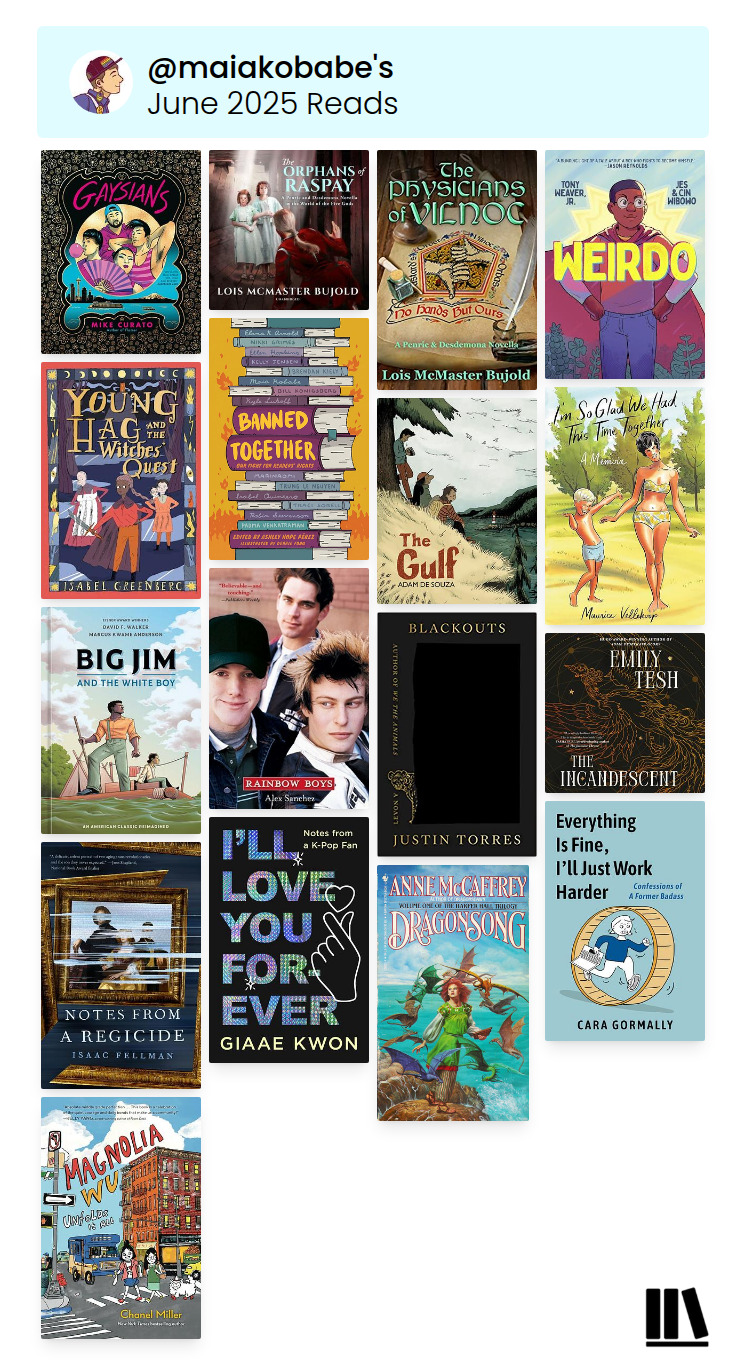
June Reading and Reviews by Maia Kobabe
I post my reviews throughout the month on Storygraph and Goodreads, and do roundups here and on patreon. Reviews below the cut.
Gaysians by Mike Curato
With deep compassion and ferocious wit, Curato introduces a Seattle-based queer Asian friend group in all of their messy glory. The Boy Luck Club, as they style themselves, are searching for love, for sex, for jobs, for safety, for community and a place to belong. Between brunches and drag shows they fight and make up, learn how to love each other, learn how to love themselves, show up for each other, fail to show up for each other, and then show up a hundred times more powerfully in glitter and heels. I've been hunting for books like this my whole life; this story broke my heart and healed it. I had the extreme pleasure of reading this book early and giving it a blurb, but it's out on shelves now! I highly recommend you check it out! And look up Mike Curato on insta, he has a pretty extensive book tour planned this summer. Maybe you can see him in person :D
The Orphans of Raspay by Lois McMaster Bujold read by Grover Gardener
Bujold continues to enjoy throwing Penric into Situations, often ones where he seems to be doing the Bastard god's will in the world of humans but with no specific directives. But when Penric's ship is captures by pirates (claimed by the Bastard) and he is thrown into the hold with a pair of orphans (claimed by the Bastard), who are daughters of a sex worker (claimed by the Bastard), Penric can take the broad hint that his task here is to rescue them. But he must at the same time rescue himself!
The Physicians of Vilnoc by Lois McMaster Bujold read by Grover Gardener
Unfortunately this is the weakest of the series so far, but the next one is a full length novel instead of a novella so I'm excited to see what happens next!
Weirdo by Tony Weaver Jr illustrated by Jes & Cin Wibowo
This story centers 11 year old Tony, a nerdy Black writer and anime fan, who is bullied at school to the point of becoming suicidal before his parents intervene and move him to a different school. At the new school, and with a therapist, Tony rebuilds his confidence and makes friends with the other quirky kids in the literature club. This book is clearly in part based on the author's life, and in part fictionalized; it ended up feeling a bit awkwardly caught between memoir and fiction for me. I loved the book's ultimate message, but I think I am not it's target audience.
Young Hag and the Witches Quest by Isabel Greenberg
I love an Arthurian retelling and this one was inventive and original. Young Hag is the daughter of a witch and a granddaughter of a witch, but she is disappointed to learn after her naming ceremony that there is no more magic in Britain. Fifty years earlier, Merlin was sealed into a tree, the sword Excalibur was broken, and the doors between the human realm and the Otherworld were shut. But who closed them, and why? And what does it mean when human babies are suddenly getting replaced by Faerie changlings, and knights ride giant cats, and old secrets begin coming to light? The art is scratchy and wild, coloring done in a limited palette that suits the magically shadowed and misted landscapes of this world of story. If you enjoyed Spear by Nicola Griffith or The Winter Prince by Elizabeth Wein or The Once and Future King by TH White you should read this one as well.
Banned Together: Our Fight For Readers Rights edited by Ashley Hope Pérez
A powerful and diverse collection of stories, essays, poems, comics, and information on how book bans are affecting authors, schools, teachers and communities. If you want to know what the authors of frequently challenged books have to say about it, this is a good place to start! I am biased, because I have a comic in this book, but it's a very strong collection.
The Gulf by Adam de Souza
In the early 2000s, high school Oli struggles with frustration over the state of the world. The adults around her are preoccupied by jobs, dishes, credit card debts, and keep pressuring her to make choices about college or her future. The news is full of disasters, wars, inequality; she just wants to go somewhere were she can live meaningfully, unplugged from the system and doing no harm. She comes up with the scheme: run away after high school with her two best friends to a commune she's learned about on an island off the coast of Vancouver. But Oli isn't very good at planning. She's hotheaded and reckless, and the runaway trip gets off to a rocky start after a fight a school and loosing the backpack of camping supplies she carefully packed. Can she even find the commune, and if she can, what will it look like when she arrives? What about the other teens she's dragged into her haphazard search for an ethical life? This is a wonderful comic, well paced, funny, adventurous, and wise. The characters feel authentically human, full of yearning and good intentions, but often making bad choices or painful mistakes. Highly recommend!
Blackouts by Justin Torres
The majority of this book is set in a single room in which two gay men- one young, one dying- talk about, around, and through queer histories. The unlikely pair met years before during a brief overlapping stay in a mental institution. The older, Juan, shares the story of a real-world lesbian researcher, Jan Gay, who helped facilitate a series of interviews with queer people in the 1930s, which later formed the bases of a book titled Sex Variants: A Study of Homosexual Patterns. Juan has a personal connection with Gay, as well as a copy of Sex Variants, with much of the clinical jargon blacked out to highlight queer people's stories in their own words. Excerpts of these blacked out pages as well as photographs and drawings are included in the text of this book, which is billed as a novel, but clearly contains a strong vein of history. Frankly, I would rather have just read a nonfiction book about Jan Gay's life, or of queer life in the 1930s. The novel elements, formal elements, and history all sat kind of awkwardly side by side for me. I read this in a queer book club, and we were all underwhelmed by it. All of us are aware of the persistent problem of the erasure of queer history; all of us wished the author had taken the theme farther; and all of us had seen more interesting and creative examples of blackout poetry on tumblr or in zines.
I’m So Glad We Had This Time Together by Maurice Vellekoop
This is a beautifully drawn, aesthetically powerful memoir of the author's life up until his late 30s. Raised by Dutch immigrants in blue-collar Toronto in the 1970s, Vellekoop writes about the art, music, movies, and books which fired his imagination as a child, of the bullying and gay-bashing he suffered from in school and in his twenties, of influential teachers, friends, failed loves, and his growing art career. A cherub and a demon, manifestations of the author's optimism and pessimism, often comment from the sides of the panel as he wrestles with a life-long depression and self doubt. The book ran a little long for me- I think the last third could have been edited down- but I also happily read this over just a few days and luxuriated in the colors and visuals.
Rainbow Boys by Alex Sanchez read by Alston Brown
This book is almost 25 years old! It was fun to revisit one of the foundational queer texts of my high school years (and be reminded of the feature of baby Matt Bomber, not yet famous, on the original cover). It was surprising how much of this story still felt current. I think the structure, which features three POV characters, each at a very different point along their journeys of self-knowledge and self-acceptance, really helps keep the story feeling relevant a quarter century after its release.
Big Jim and The White Boy by David F Walker and Marcus Kwame Anderson, colors by Isabell Struble
This is a rich and inventive book which goes far beyond a simple retelling of "Huckleberry Finn" from Jim's POV. This story winds through multiple generations of Jim's family as they tell and retell Jim's story, from the kidnapping of his enslaved wife and children, his voyage on the Mississippi, battles in the Civil War, and time spent as an agent of the Underground Railroad. Jim is the main character here, and his courage is front and center. His story is retold in scenes set in the 1930s, 1980s, and 2020s, as grandparents speak to grandchildren, show family photos, and stress the important of memory, retelling, and writing. History is not always told by the victors, Jim's great-great-great-grand daughter says, but by those who take the time to put pen to paper and record it.
Notes from a Regicide by Isaac Fellman
In a future so distant it feels like the past, a trans journalist, Griffon Keming, writes about the parents who adopted him as a teenager. They took him away from an abusive home, paid for his transition, and tried to love him and raise him as well as they could but they were deeply damaged by their own pasts. They were both artists and revolutionaries who helped topple a monarchy on the small island kingdom they called home before fleeing to a New York almost unrecognizable to ours. Griffon's narration is woven through a journal written by his adopted father while in prison, suffering from a disabling injury, alcoholism and grief, thinking the love of his life was already dead. This story has an ornate Baroque heaviness to the aesthetic and world building that make it feel like historical fiction despite some science fiction elements. It's a weird, nonlinear book which takes its own time to reveal its secrets and sweetness. I have no idea what to compare it to and I had such a good time with it! At its core it the story of a found family of trans folks surviving, broken but unbowed, systems that sought to crush them. It feels timely and timeless.
The Incandescent by Emily Tesh read by Zara Ramm
Doctor Walden, 38, bisexual, single, is one of the most power magicians in the field of demon summoning and control in England, but she said no to a lucrative Department of Defense job to instead serve as the Director of Magic at Chetwood Academy instead. Chetwood is a boarding school; in fact it was Walden's boarding school, when she was a teenage magic student. But now her days are filled with faculty meetings, grading, teaching the senior level summoning class, and wrangling the imps that constantly infest the office copy machine. She thinks she has her life and her calendar under control, but that's before the distractingly attractive head of campus security starts asking uncomfortable questions and the senior students summon a demon big enough to devour the entire school. Walden's comfortable routines are thrown into disarray, she sleeps with an inadvisable colleague, and through it all an even more dangerous creature stirs just under the surface of her own skin. I had a very good time with this; it was refreshing to read a magic school story from a teacher's POV instead of a student.
Dragonsong by Anne McCaffery read by Sally Darling
I'm so happy I decided to revisit this book 20 or more years after I read it for the first time. Pern is such an interesting and well developed world, mostly fantasy but with a few sci-fi elements that still feel as original today as I'm sure they did in the 1976 when this was first published. While listening to this first book I was struck by some overlapping themes with Alanna, by Tamora Pierce published in 1983 and Magic's Pawn by Mercades Lackey published in 1989. All three are about a young person who wants to pursue a career forbidden by their strict or emotionally distant parents; all three have to run away/lie to their parents to follow their calling; all three suffer in silence and secret before finally having their innate talents finally recognized and celebrated by the adults in a chosen family around them. All three were also published before the YA genre was as well defined as it is today which lead to choices I'm not sure a contemporary book would get away with. In Dragonsong the POV floats somewhat freely between the lead teen, Menolly, her parents, and a few other adults in the seaside hold where she was born. The first glimpse we get of Menolly isn't from her own POV but a conversation between her parents worrying about how she does not fit well into their survival-focused fishing community. It's such an interesting writing choice that really serves this story well, and flies in the face of most "writing for teens" advice I see today.
I’ll Love You Forever: Notes from a Kpop Fan by Giaae Kwon
I first discovered Giaae Kwon's writing through a series of excellent and insightful personal essays on kpop published by Catapult, and was delighted when she sold this collection around the same themes. Kwon grew up in a conservative Korean church community in Los Angeles and discovered kpop in its first generation with the group H.O.T. in the late 1990s. This gives her a long view of the industry which has exploded in popularity globally and especially in the US in the past few years. Each essay in this collection focuses on a different group or soloist as its anchor point but the essays range into Korean history and Kwon's personal life. Major content warnings for this book include a lot of references to weight, body shaming, dieting, depression, and suicidal thoughts. The essays aren't equally strong; unfortunately, I thought the BTS essay was one of the weaker ones of the collection, though that might be because BTS is one of very few groups I have actually been following longer than the author. But many of the other essays absolutely hit; the pieces on Tablo (member of Epik High), Taeyeon (member of Girl's Generation) and Shinhwa (longest running still active kpop group) all stand out as shining high lights. The whole collection is absolutely worth a read, and will especially speak to anyone who has been following kpop for long enough to be at least passingly, or deeply, familiar with groups from all five generations of kpop and an interest in the industry as a whole.
Everything Is Fine, I’ll just Work Harder by Cara Gormally
This is a thoughtful and intimate memoir of processing trauma, which goes into the mechanics of how EMDR therapy works the point of view of someone who is both a patient and scientific researcher. Cara is a very busy and successful academic who packs as much into their days as possible, until a facebook friend notification from the man who raped them in college shakes them out of their routine and forces them to face memories and feelings they've been suppressing for years. Cara models and documents the long, nonlinear process of healing and learning to be kinder and gentler with their own brain, body, and emotions.
Magnolia Wu Unfolds It All by Chanel Miller
Magnolia lives in New York City with her parents, who run a laundry mat. She doesn't really have any friends, aside from their dog, Mr Pants... until Iris arrives with her mother from California. Iris is nervous about navigating New York on her own, but helps Magnolia dream up a plan to solve an ongoing mystery and explore the city at the same time. This is a very gentle story for young readers, but I was charmed by its whimsy and the black and white illustrations and cover at drawn by the author herself. I am very ready to read everything Chanel Miller ever publishes!
41 notes
·
View notes